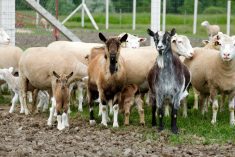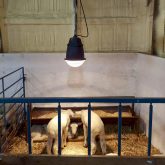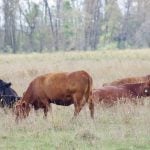There’s no denying it — drugs used to treat parasites in sheep and goat production need to be employed properly.
If they’re not, that could lead to parasitic resistance and drugs that just don’t work.

“You can’t just hammer drugs at the problem, because they won’t work forever,” said Lynn Tait, a sheep producer and small-ruminant veterinarian with OC Flock Management in Bowden.
Before treating them with anthelmintics (anti-parasitic drugs), sheep and goats need to be weighed and dosed to accommodate the heaviest animal in the group.
“Underdosing will result in resistance. If you are underdosing for the weight of the animal, you are opening the doors for those parasites that have resistance,” said Tait.
An automatic drench gun should be accurate and fully calibrated, and should administer a full dose. A proper drench gun should go over a ruminant’s tongue and have a metal curve to it. Ivermec pour-on guns should not be used as a substitute.
Read Also

Solar and sheep provide valuable farm diversification
Agrivoltaics – the system of grazing sheep or conducting other agricultural activity under arrays of solar panels – can provide farmers with diversification options for their operations.
“You have to get over the base of the tongue. If you don’t get it back far enough, they spit it out — and it doesn’t do any good if they spit it out,” said Tait.
Injectable dewormers work on sheep, but not on goats. Pour-on products designed for cattle should never be used on small ruminants.
Oral drenches will work better if food is withheld for 24 hours before the drench is administered. Tait recommends isolating sheep or goats in a pen the night before. If food is withheld, there will be less material in the rumen, and the dewormers will be more effective.
Only treat sheep and goats when they need it. Some groups may need it, but others may be fine.
In order to decide which to treat, collect a couple of manure pellets from a few animals in each management group. (A good time for sampling is first thing in the morning after letting them out on pasture.) The fecal samples will have eggs in them, showing the parasite load in each animal group.
“If you have a group of 50 animals, you will take five to six samples. It will not be accurate to the individual animal, but it will give you a good idea of where the group is, parasite-wise.”
This method can be used to identify parasite trends and will save money because not every animal is being tested. Producers who have more animals can learn to do fecals at home, which requires a microscope. Vets can also handle fecal samples.
A group of animals that looks sickly could have parasites, and may need to be treated, as can ones that lose body conditioning. Tait recommends culling any individual animals that are chronically underconditioned.
“Over time, you will build a flock that is more able to deal with a parasite load,” she said.
Animals from outside the flock should be quarantined in a dry pen, not on pasture. Tests should be done if you don’t know the history and management of the newcomers.
Most producers think diarrhea and weight loss are signs of a parasite problem, but they could actually be signs of something else.
“If you deworm one animal, two animals, or an entire group of animals and there’s no change, ask yourself if parasites are really the problem,” she said. “I have seen animals that have been dewormed repeatedly with no improvement and that’s because they have Johne’s.”
Deworming without results might also mean that resistance to the dewormer has developed. Unfortunately, many producers have bad habits that can contribute to faster drug resistance, including mixing drugs together to create deworming cocktails. And rotation of dewormers should be avoided.
“Don’t rotate dewormers more often than annually. I’m a firm believer that if it’s working, don’t rotate it,” said Tait.















